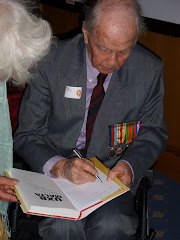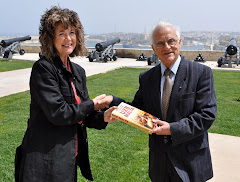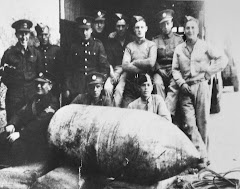How would Hurt Locker hero, US Army Sergeant First Class Will James, have faired in the early days of bomb disposal back in World War 2? Former Royal Engineers Bomb Disposal Officer George Carroll, who was responsible for the disposal of over 1500 unexploded bombs between 1940 and 1944, has been surprised at how the job is represented in the action-packed Oscar-winning film.
The reason for James’ posting to Iraq is at least familiar: in 1940 many Bomb Disposal (BD) officers were co-opted to replace a dead man, as life expectancy in the first months of the blitz fell to a matter of weeks. But SFC James soon reveals personal qualities at odds with those traditionally demanded for bomb disposal. He flaunts safety procedures, refusing to send in a robot first to check a terrorist bomb, and removing his safety suit ‘for comfort’.
Such a man would have been considered unsuitable for the job in 1940, when self-discipline was considered essential and thrill-seekers were seen as a liability. For Lt Carroll, while protection of civilians or a military installation was the objective, his prime duty was to preserve his own life and those of his men – so they lived to tackle the next bomb. Bomb disposal specialists are always in short supply in theatres of war – whether on the remote Island of Malta in 1942, or in Iraq and Afghanistan today.
Perhaps there’s a clue to James’ behaviour in the 873 bombs he has defuzed. According to George Carroll, a bomb disposal officer progresses through three stages: first, concern through lack of knowledge, then using knowledge gained from experience. The third stage – long immunity from accident – can produce a fatal attitude to risk. George’s own moment came after working through five months of the London blitz, when a fuze he was examining in the workshop fired, taking off part of his thumb. Ironically, the event probably saved his life, reinforcing a proper respect for the explosives he subsequently faced.
So what is more dangerous – fear, or a lack of it? When Hurt Locker junior officer Eldridge admits to having been scared, James suggests that makes him a coward. George Carroll disagrees: “A truly courageous man is afraid, but carries out his duty anyway.” He describes his own feelings when approaching a live bomb as ‘concern’. While we agree with the film’s trailer that “you have to be brave”, that’s not a word George would use: he believes his job required less courage than an infantryman charging into enemy fire. The battle for the bomb disposal man is a psychological one: the pressure not just to appear calm, but to be calm, calculating and logical, and carry that through into action, when elsewhere in your brain there’s a natural and proper fear reaction.
It’s this critical balance between our perception of the danger and the controlled reality of bomb disposal that challenges any movie maker or writer dealing with the subject. How do you awaken in the audience the tension and courage of the ‘longest walk’ to a live bomb which could explode at any moment, without at the same time glorifying the act? The film’s creator has chosen to maximise the dramatic action, sometimes at the expense of reality.
The bomb disposal men I interviewed for my book, UXB Malta, would not thank you for presenting them as heroes. But they share one important feeling with the characters in the Hurt Locker: the immense satisfaction from saving lives, and from defeating the bomb maker. And as one leading modern Explosive Ordnance Disposal expert acknowledges, the movie represents “the intensity and courage displayed by EOD techs. What it takes to find, identify and then render safe those bombs – that’s a story, and it’s an incredible story.”
Subscribe to:
Post Comments (Atom)






Very interesting! I like the concept of comparing the past (and real events!) to the present (and fiction).
ReplyDelete